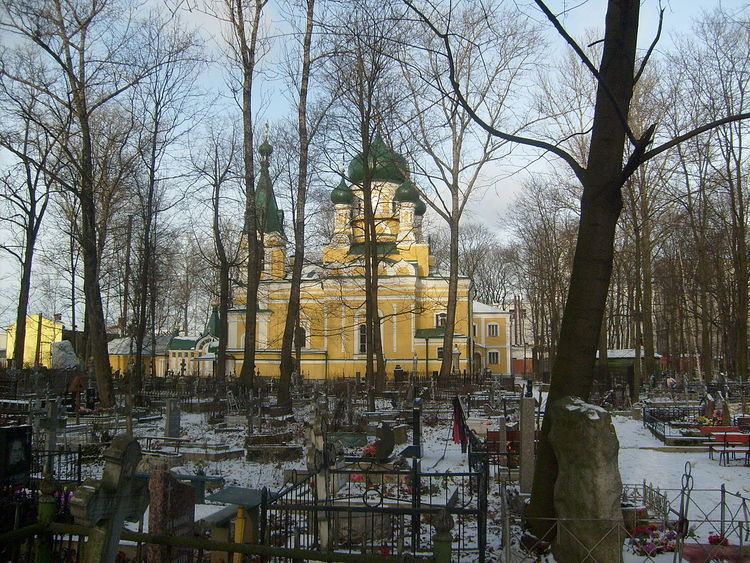Established 1773 No. of interments > 100,000 Date formed 1773 | Type Public Phone +7 812 766-04-00 | |
 | ||
Address Rasstannyy pr-d, 3, Sankt-Peterburg, Russia, 192007 Burials Ivan Turgenev, Alexander Blok, Dmitri Mendeleev Similar Literatorskie mostki, Smolensky Lutheran Cemetery, Tikhvin Cemetery, Piskaryovskoye Memorial Cemetery, Alexander Nevsky Lavra | ||
The Volkovo Cemetery (also Volkovskoe) (Russian: Во́лковское кла́дбище or Во́лково кла́дбище) is one of the largest and oldest non-Orthodox cemeteries in Saint Petersburg, Russia. Until the early 20th century it was one of the main burial grounds for Lutheran Germans in Russia. It is estimated that over 100,000 people have been buried at this cemetery since 1773.
Contents
Origins 1770–1773
Between late 1771 and 1772, Catherine the Great, empress of the Russian empire, issued an edict which decreed that, from that point on, any person who died (regardless of social standing or class origins) no longer had the right to be buried within church crypts or adjacent churchyards. New cemeteries had to be built across the entire Russian Empire and from then on they all had to be located outside city limits.
One of the main motivations behind these measures was overcrowding in church crypts and graveyards. However, the true deciding factor which led to the new laws being enforced on such a mass scale across the entire Russian empire was to avoid further outbreaks of highly contagious diseases, especially the black plague which had led to the Plague Riot in Moscow in 1771.
The Volkovo cemetery was founded in 1773. The first person to be buried in this cemetery was Johann Gebhard Brethfeld, a merchant in Saint Petersburg.
Current research
The person who has done the most work in investigating the history of the cemetery is Dr. Benedikt Böhm in Saint Petersburg. As of 2007, Dr. Böhm and published four volumes on the history of the cemetery, each of which contain extensive lists of names of those people who were buried there between 1773 and 1936. His 2 main sources for these publications are as follows:
Dr Böhm's publications
The publications are used by genealogists for family research in pre-revolutionary Russia and the early Soviet period when vital records are missing or prove difficult to find. Historians use them to research the social histories of the city.
